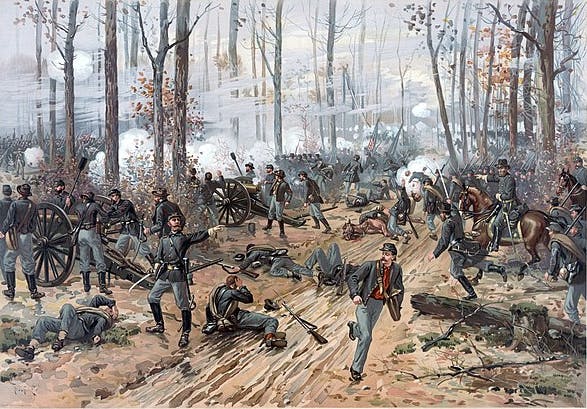New Perspectives on Four Leading Figures on Both Sides of America’s Nation-Shaking Civil War
Their lingering influence and contested legacies are a reminder of William Faulkner’s insight that ‘The past is never dead. It’s not even past.’

‘Oracle of Lost Causes: John Newman Edwards and His Never-Ending Civil War‘
By Matthew Christopher Hulbert
Bison Books, 360 pages
‘Longstreet: The Confederate General Who Defied the South‘
By Elizabeth Varon
Simon & Schuster, 480 pages
‘Differ We Must: How Lincoln Succeeded in a Divided America‘
By Steve Inskeep
Penguin Press, 352 pages
‘Soldier of Destiny: Slavery, Secession, and the Redemption of Ulysses S. Grant‘
By John Reeves
Pegasus Books, 304 pages
The life of John Newman Edwards, soldier and journalist, changes the way “we conceptualize the boundaries of the Civil War and Reconstruction,” contends Matthew Christopher Hulbert. Those nation-shaking and shaping events, in Edwards’s mind, never ended, so that he carried with him the values of the Confederacy in his depiction of the developing American West and the world beyond America’s borders.
Edwards’s revanchism reminds me of Gavin Stevens’s statement in William Faulkner’s novel “Requiem for a Nun”: “The past is never dead. It’s not even past.” On the face of it, the statement is preposterous, yet hardly a day goes by in my web searches that this bromide is not quoted. The Confederate general, James Longstreet, thought otherwise.
In 1870, he sat “in the reviewing stand, radiating his approval” of a presentation ceremony for the Black regiments in the Louisiana State Militia.” Lee’s trusted lieutenant had become a Republican and the ally of everything the Confederates had loathed. In effect, this “least understood” of Civil War figures represents a refutation of the lost cause Edwards never stopped championing.
History can reveal the conditions and contingencies that shape a person’s life, and yet only biography can get at what makes an Edwards remain in the past and Longstreet not only accept but embrace a new dispensation.
That the South lost, Ms. Varon suggests, in itself began to force Longstreet to change his racial politics just as that very loss motivated Edwards to see in every political upheaval the playing out of what had not been resolved in the Civil War.
Lincoln believed, as Steve Inskeep suggests, that political causes and personalities are situational. The president “understood the power of circumstances and tried to advance his goals within them. He knew the people he wanted to lead and met them as they were. He spoke of things that mattered to them, nudging just enough people just as far as they were willing to go.”
Eventually, Mr. Inskeep explains, “the antislavery movement changed the circumstances, winning a presidential election in a way that no party ever had, then winning a second election that came in the form of civil war. At the war’s end he was killed by a man who believed that he was changing history, but Lincoln had made his impression.”
Ulysses S. Grant is another example of how events and contingencies can change an individual, who is not stuck in the past. He discovered his great genius for waging war that was founded on achieving absolute victory: “No terms except an unconditional and immediate surrender can be accepted” Grant announced. His words, John Reeves observes, “would resonate deeply with his northern countrymen.”
Mr. Reeves adds that “The upheaval of war created a latent wish among defenders of the Republic for the unconditional surrender of the secessionists. Ulysses, surprisingly, fulfilled that wish. It was surprising because he wasn’t an especially uncompromising person on most things. . . it’s ironic that Ulysses became famous for words that weren’t representative of his usually conciliatory personality.”
It is not unusual—even if still sometimes seems disconcerting — to read biographers who are on a first name basis with their subjects, but in this case Mr. Reeves wants us to share that intimacy to drive home how this person — not just the historical figure—began to behave in new ways. Tucked into an explanation of Grant’s evolving temperament is the word “latent” — used as a signal of what now has come to pass in the continuum of past and present.
All four of these books suggest why biography, which has nothing to prove and everything to disclose about individuals, is essential to history, which has everything to prove about events, but never enough to disclose about those who people the circumstances of an ever-changing world.
Mr. Rollyson is the author of “Reading Biography” and “American Biography.”

